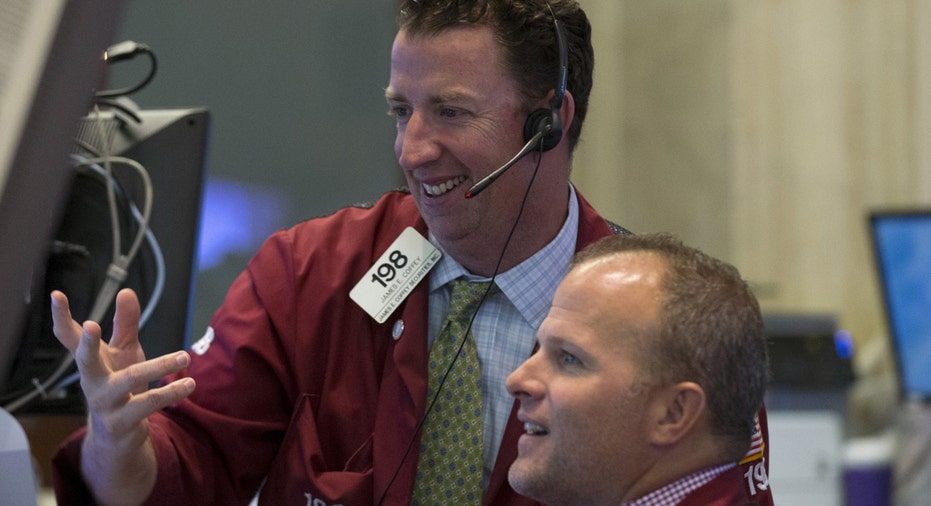Stocks End Flat, Consumer Shares Lead Ahead of Black Friday

U.S. equity markets were mostly flat on Wednesday as traders looked forward a shortened week bisected by Thursday’s Thanksgiving holiday.
The Dow Jones Industrial Average was 1 point higher, or 0.01% to 17813. The S&P 500 declined a fraction of a point, or 0.01% to 2088, while the Nasdaq Composite gained 13 points, or 0.26% to 5116.
The consumer and health-care sectors led Wall Street’s gains, while utilities and materials declined the most.
Today’s Markets
Before traders headed home for plates piled high with turkey, stuffing and all the Thanksgiving essentials, they parsed a deluge of data that painted a mixed picture for the U.S. economy.
The Commerce Department reported orders for long-lasting goods like computers, and washers and dryers, rose 3% last month, blowing past expectations for a 1.5% jump. However, after stripping out the transportation component, orders rose 0.5%, which compared to a 0.3% expected gain.
IHS Global Insight U.S. Economist Michael Montgomery said domestic demand for core capital goods isn’t as strong as the struggling manufacturing sector.
“Foreign completion is stiff thanks to the robust dollar and export markets face reluctant customers who are more inclined to take advantage of cheaper prices available for our foreign competitors. Outside of motor vehicles, it is a tough world for domestic manufacturers and it is not going to get any easier as long as the greenback remains strong,” he said in a note.
The Commerce Department also said consumer spending and income increased, though less than expected. Spending rose 0.1% last month, compared to expectations for a 0.3% rise, while income increased 0.4%, matching views. The University of Michigan, meanwhile, said consumer sentiment in November declined during the month. Its gauge fell to 91.3 from 93.1.
Weekly jobless claims, meanwhile, also came in better than expected as claims for first-time unemployment benefits fell by 12,000 last week. Sales of new, single-family homes jumped 10.7% in October to an annualized rate of 495,000 units, slightly missing expectations for 500,000 units.
Bill Northey, chief investment officer at U.S. Bank’s private client group, said the data dump over the last two days has been enough to satisfy any perspective or view on the U.S. economy thanks to its mixed reports. He said while the labor market has shown signs of strength, it’s the consumer that’s looking healthy, but sluggish.
“We should note that a couple of confidence indicators this week have been somewhat softer and whether that will be poor for holiday shopping heading into Black Friday and Cyber Monday – those are on the radar at this point, along with indicators that feed into the Fed’s perspective of the domestic economy and the health of the consumer,” he explained.
Northley added that the house view calls for a December rate hike – which is consistent with most of Wall Street’s expectations – but the central bank will continue to keep a very keen eye on every report that comes down ahead of its mid-December FOMC meeting where it will decide whether to hike rates or keep them steady at historic lows.
“The consumer is relatively healthy, there’s been stronger data around the labor market, wage growth is somewhat better. But there’s still concern translating that into spending, and you see that in the consumer confidence data. How that will translate to the balance of the fourth-quarter spending season, the pace of economic growth, and corporate earnings – those areas are ones to watch,” he said.
In recent action, the yield on the benchmark 10-year U.S. Treasury bond slipped 0.018 percentage point to 2.225%. Yields move in the opposite direction of prices.
The euro, meanwhile, fell 0.25% against the U.S. dollar, while the greenback was mixed against a basket of global currencies.
Elsewhere in the market, commodities threw red on the screen during the session. Global oil prices slumped after a big rally in the prior session as energy led the day’s gains. Focus turned from Middle East geopolitical concerns back to the growing oil supply glut ahead of next week’s OPEC meeting. U.S. crude prices slumped 0.40% to $43.04, while Brent, the international benchmark, declined 0.11% to $46.17 a barrel.
Metals were also lower as gold shed 0.35% to $1,070 a troy ounce. Silver declined 0.01% to $14.17 an ounce, while copper lost 0.44% to $2.04 a pound.
Stock market volume was about 25% below its average on Wednesday.



















